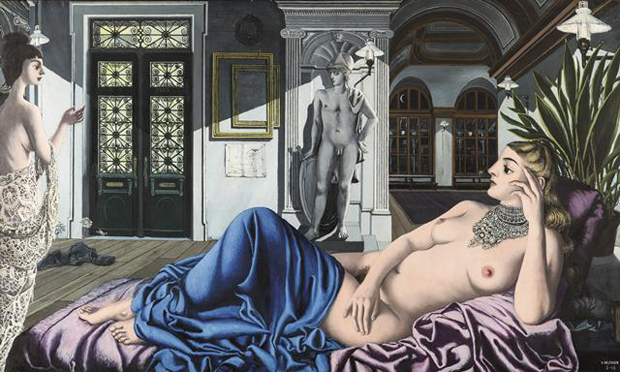
First UK solo show for surrealist Paul Delvaux
The Belgian artist and René Magritte confidant's New York exhibition is set to travel to London next month
He may not have enjoyed the popularity of Salvador Dali, nor René Magritte's poppy associations, thanks to The Beatles appropriation of his Apple, yet Paul Delvaux, the 20th century Belgian surrealist painter, produced some of the most enduring and engaging, figurative artworks of the 20th century.
Indeed, some distance between Delvaux and the more famous Surrealists is to be expected. As we explain in our Surrealism book, Delvaux "wished to create a dialogue with certain historical genres of painting, 'surrealising' them." The artist's paintings, while filled with a recognisable psychosexual charge, also contained Classical and Renaissance motifs, with ancient buildings with Ingres-style nudes, depicted alongside trams and animated skeletons.
{media1}
Delvaux wasn't without his prominent followers; the British writer JG Ballard paid to have two long-lost Delvaux works recreated and hung in his home. However, a monographic exhibition, currently on in New York at Blain|Di Donna and soon to travel to London, certainly feels overdue. The show, of over 20 oil paintings and works on paper from the 1930s through the 1960s, is the first monographic exhibition of Delvaux ever to go on show in Britain. The works are drawn from European museums, private collections and the Paul Delvaux Foundation. Surprisingly for a commercial gallery, it is a non-selling exhibition, and marks Blain's on-going dedication to Surrealist art, following its 2011 Magritte show and a 2012 Andre Masson exhibition.
{media2}
New Yorkers can enjoy the exhibition now; it opened at Blain|Di Donna in Manhattan earlier this month, and closes on June 1 before traveling to London, where it will be on display at Blain|Southern in Mayfair from June 18 to July 17. For more on the exhibition, go here. For greater insight into Delvaux and his place in one of the 20th century's most important art movements, please consider our Surrealism book.